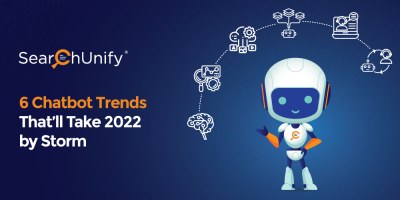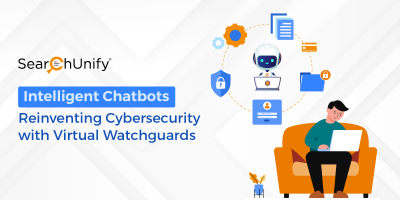
According to Gartner, 70% of white-collar workers will interact with conversational platforms daily by 2022.
Chatbots are proliferating the workplace and continue to be a hot topic due to their ability to mimic human conversations. But, have they become so indispensable to render human interactions redundant? The answer is no.
Forbes reveals that 86% of consumers still prefer to interact with a human agent. It doesn’t come as a surprise though. Why? Because all of us have at least once encountered a baffled bot that failed to answer our queries.
64% of consumers feel companies are losing the human element of CX. In fact, a Userlike survey deduced that 77% of people feel the best part about companies deploying chatbots is getting the option to escalate to a human agent. That is why the deployment of substandard customer-facing tech can sabotage the overall CX and lose the human touch, thereby worsening the situation.
With the stakes so high, it might spell doom if the human-chatbot duo is anything short of remarkable. But, fret not! This blog post discusses how you can strategically manage the bot to human takeover as seamlessly as possible.
The Importance of Bot-Human Handoff Timing
Organizations must foster a customer support model where chatbots are the first point of contact in the process. They perform tedious and rote tasks such as handling L1 queries, feeding CRM data, taking the details regarding customer issues, and so on. On the flip side, whenever a complex user query arises or the bot is unable to return relevant answers, it should be able to smoothly pass on the conversation to a human agent.
For humans and bots to coexist, the bot must perceive when to transfer the conversation to a human agent. Here are a few scenarios that should trigger the agent handoff:
1. Upon User Request
Sometimes, users don’t feel comfortable sharing their issues with a bot, irrespective of how intelligent it is and how well it understands and responds to natural language. Giving your customers both the options, a bot and a human, from within the chat window introduces the bot to the customer while acknowledging the user’s wish to speak with a human agent.
2. Based on Complexity
Chatbots are only as smart as the humans program them to be. Despite our best efforts, there would be cases that are beyond their scope. An incoherent bot to human transition would only make matters worse. This is where an intelligent bot can turn the tables for good. It can realize the end of its capabilities and ensure a seamless agent handoff accordingly. What’s more, a smart chatbot presents the entire user journey to the agents so that your users don’t have to repeat themselves.

Forrester recommends that if automation cannot handle an inquiry after two attempts, then the customer should be turned over to a human.
3. Based on Urgency and Criticality
Not all issues are created equal — some tend to be more urgent than others and demand immediate attention. For instance, you want to order a laptop online during the Black Friday Sale. However, you’re already under a time constraint (the sale ends in 20 minutes), and still contact their customer service for prompt answers to a few queries. In this situation, talking to a bot might deter the query resolutions. Texting back and forth with a bot will not only waste your precious time but also irk you. Hence, chatbots must be trained to trigger human takeovers in pressing issues so that such issues can be taken care of promptly.
4. Based on User Sentiments
New-age chatbots leverage the power of NLP, ML, and sentiment analysis to infer the user’s mood from the conversation. Furthermore, it gauges dissatisfaction and the likelihood of an escalation in real-time. If the conversation appears to be going south, the chatbot can quickly hand over the conversation to a live agent. The bot also presents the customer journey and ticket history to the agent, which enables them to empathize and personalize accordingly.
Entwine Humans & Chatbot for an Exemplary CX
Infusing the emotional touch in every conversation is the USP of a human agent; whereas, chatbots are available 24/7 to quickly and efficiently perform routine tasks. When you integrate this duo within your workflows, you get an unbeatable customer support mix.
If you’re looking for an intelligent chatbot, then look no further. SearchUnify’s chatbot is touted as a ‘best-of-breed’ solution that offloads support agents from mundane tasks. It also ensures your agents and chatbots work in harmony and tackle the parts of interaction they excel at. Want to know how? Request a free demo today!
















